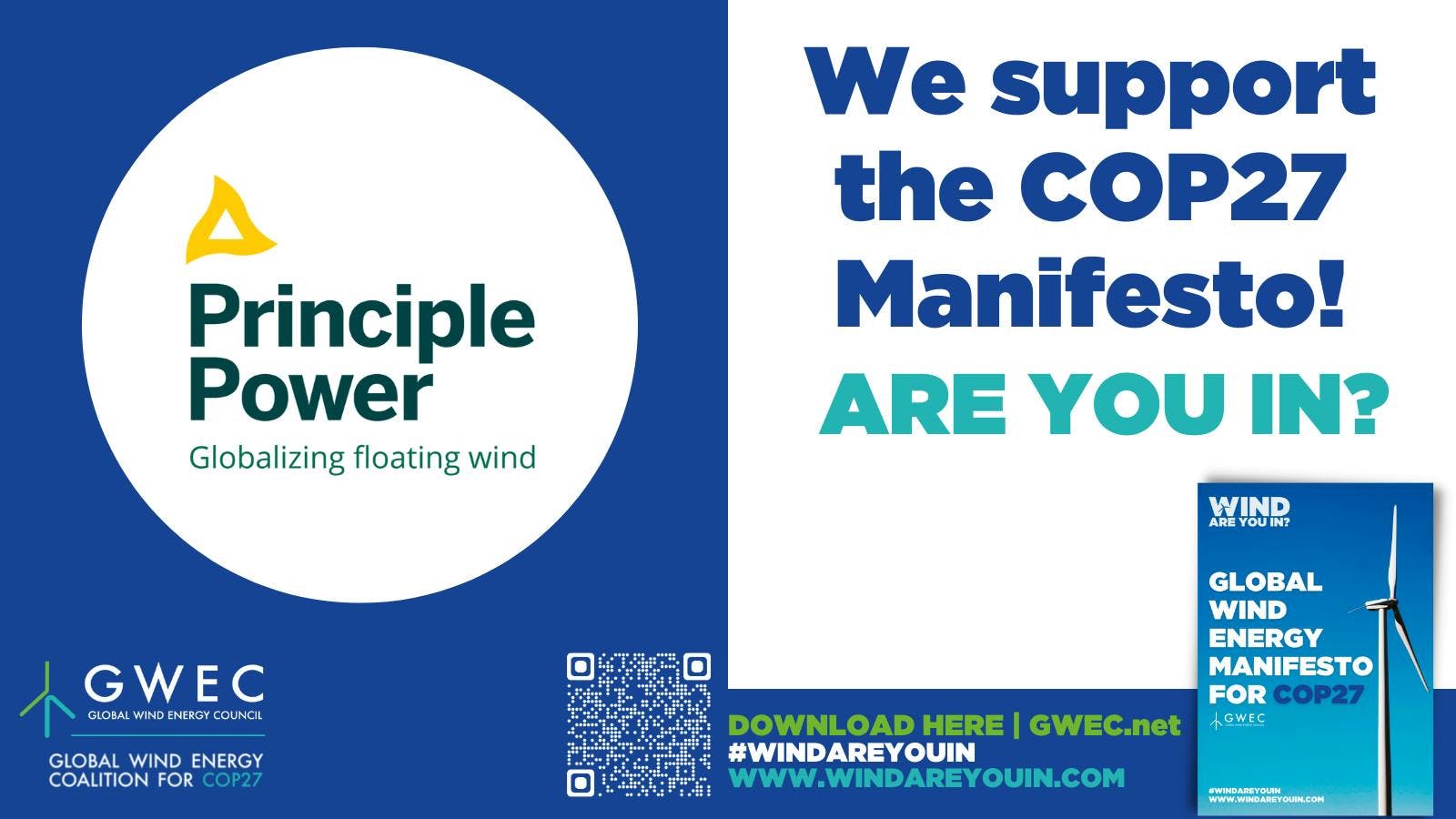Principle Powers joins 100+ industry-leading corporations and associations endorsing Global Wind Energy Council’s Manifesto for COP27
The wind energy industry warns: actions, not words, needed from governments to address energy security and climate crises ahead of COP27.

Principle Power is one of the 100+ leading wind energy companies and associations, representing 81% of installed wind energy worldwide, calling on Paris Signatories to streamline planning and permitting, upgrade grid infrastructure and evolve power markets to accelerate renewable energy deployment.
If the world is to get on track for a 1.5°C-compliant pathway to net zero, annual global wind energy installations must quadruple by 2030 to around 390 GW per year, according to the International Energy Agency. By 2050, wind energy must generate more than one-third of global electricity, up from 6% today.
Urgent action must be taken to realize this goal and unleash the full potential of wind technology to provide secure, affordable, and clean energy for communities across the world. The Global Wind Energy Manifesto for COP27 warns that while wind energy is one of the most competitive, mature, and quickly deployable energy technologies we have today, to thrive it needs large, steady, and visible volumes for deployment and a robust global supply chain.
COP27 presents an opportunity for policymakers to come together to deal with these twin crises. The opportunity to draw a line under the unstable and insecure fossil fuel era is there waiting to be seized by leaders around the world. It is time the world welcomes the renewables era bringing clean energy and clean jobs with it.
— CEO, GWEC
The manifesto calls on policymakers, financial institutions, and other stakeholders to work together on eight concrete action areas:
- Scale up ambition and higher volumes for wind power, and reflect this in updated Nationally Determined Contributions (NDCs) by the end of 2022, comprehensive national climate and net zero strategies, and short- and long-term energy plans.
- Urgently streamline permitting schemes for grid-scale renewable energy projects to accelerate wind energy deployment and build a net zero-compatible project pipeline in the energy sector.
- Commit to action plans to rapidly build out grids for integration of clean energy and cross-sector decarbonization.
- Evolve energy markets for the future.
- Avoid the long-term lock-in of fossil fuel-based generation in the current energy security crisis.
- Develop cohesive and inclusive policies to enact a just and equitable energy transition.
- Ensure national and regional finance adhere to robust benchmarks and guardrails for a net zero, 1.5°C-compliant pathway.
- Progress on the implementation of the global rulebook on carbon pricing, particularly Articles 6.2 and 6.4 of the Paris Agreement. Commit to action plans to rapidly build out grids for integration of clean energy and cross-sector decarbonization.
The wind industry is already delivering significant growth and benefits to the global energy system on security, cost, and climate. In 2021, 94 GW of wind energy capacity was added globally producing around 275 TWh of electricity per year – more than the current annual electricity demand in Australia and enough to displace over one-third of the EU’s imports of Russian gas.
But decisions at COP27 and in the next few years will determine whether the world can leverage wind and renewable energy to get on track for net zero and secure a livable, just, and equitable energy transition.




